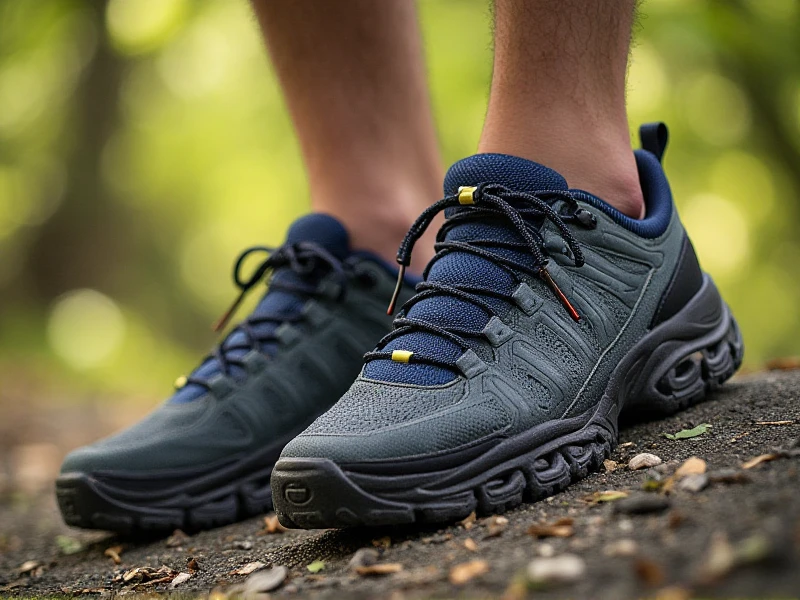Finding Your Perfect Fit: Essential Features for Women's Hashing Shoes Every Explorer Needs
2025-05-31

Here is an SEO-optimized article about Women's Hiking Shoes:
Embarking on an outdoor adventure – whether it's a gentle forest walk, a challenging mountain ascent, or a multi-day backpacking trek – starts from the ground up. Specifically, it starts with the foundation provided by your women's hiking shoes. Choosing the right pair isn't just about style; it's about comfort, safety, performance, and ensuring you can fully embrace the journey worry-free.
Unlike standard sneakers or casual footwear, women's hiking shoes are meticulously engineered to meet the unique demands of uneven, often unpredictable terrain. Understanding the key features that make them different is crucial for finding your ideal match and unlocking countless miles of reliable exploration.
1. Comfort & Support: Your Foundation for Every Mile
Long days on the trail require exceptional comfort and support. Look for these essential elements in women's hiking shoes:
Anatomical Fit: Designed specifically for the narrower heel and wider forefoot typical of many women's feet. This reduces slippage and blister spots.
Cushioned Midsole: Quality midsoles (often using EVA foam or polyurethane) absorb shock from repeated impacts, protecting your joints and reducing fatigue. More demanding hikes benefit from increased cushioning density.
Ankle Support: While low-cut trail shoes for women offer flexibility on well-maintained paths, mid or high-cut hiking shoes provide crucial lateral stability and ankle support on rougher, rocky terrain or when carrying a heavier pack, reducing the risk of twists and sprains.
Reinforced Toe Caps: Protect your toes from rocks and roots stubbing your feet.
Arch Support: Essential for preventing pain during long hikes. Look for options aligned with your specific arch type.
2. Traction: Grip That Builds Confidence
Slipping on a muddy slope or loose scree is more than unpleasant; it's dangerous. Superior traction, provided by specialized rubber compounds and aggressive lug patterns, is non-negotiable for women's hiking shoes.
Lug Depth & Pattern: Deeper, multi-directional lugs (the knobs on the sole) provide significantly better grip in mud, soft soil, loose gravel, and snow compared to shallow, smoother soles.
Sticky Rubber Compounds: Brands often employ proprietary rubber formulas (like Vibram Megagrip) offering excellent traction on slick surfaces like wet rocks, roots, and smooth granite.
Heel Braking Zone: Aggressive lugs in the heel area help control descent on steep downhill sections.
3. Stability & Durability: Built to Last the Journey
Trails are unforgiving. Your footwear needs to withstand abrasion, sharp objects, and constant flexing.
Protective Outsoles: Rugged, thick outsoles not only provide traction but also shield your feet from sharp rocks and rugged ground feel.
Shank & Rock Plates: Often integrated between the midsole and outsole, these stiff elements prevent excessive flexing and protect the arch of your foot from bruising on uneven, rocky terrain, significantly enhancing stability.
Water-Resistance vs. Breathability:
Waterproof Liners (e.g., Gore-Tex): Essential for hiking in consistently wet, muddy conditions, snow, or crossing streams. These liners effectively keep external moisture out. However, they can trap sweat inside in warmer weather.
Non-Waterproof / Highly Breathable: Faster-drying synthetic or mesh uppers offer superior ventilation in warm, dry conditions. Ideal for desert hiking or trails where wet feet aren't a major concern.
Robust Uppers: Materials like leather (full-grain suede for durability, nubuck for lighter weight) and rugged synthetic textiles resist tearing and abrasion. Look for reinforced high-wear areas like the toe box.
4. Choosing Your Perfect Pair: Beyond the Specs
Knowing the features helps, but the ultimate test is fit and feel:
Try on Tactics: Always try shoes on in the afternoon when feet are slightly swollen. Wear the precise hiking socks you intend to use.
Sizing Nuances: Expect your women's hiking shoes to be 1/2 to 1 full size larger than your street shoes to accommodate thicker socks, swelling feet miles in, and foot splay during descents. Leave ample thumbnail room (about 1/3 of an inch) ahead of your longest toe to prevent bruising downhill.
Test Run: Walk rigorously in the store testing inclines and declines if possible. Your heel should be locked in with minimal lift, and there should be no pinching or areas of excessive pressure, especially across the instep or on the sides of your forefoot.
Terrain Match: Honestly assess the conditions of your typical hikes (easy park trails vs. rugged mountains) and weight carried (light daypack vs. full backpacking load). Match your shoe choice (trail runner, hiking shoe, hiking boot) accordingly.
Investing in Performance: Worth Every Step
Selecting the right women's hiking shoes is a fundamental investment in your outdoor experience, not just an accessory. By prioritizing comfort engineered for a woman's foot, reliable traction for security on diverse terrain, and durable construction built to withstand the elements, you ensure your adventures are defined by exploration, breathtaking views, and accomplishment, not preventable pain or discomfort.
Ditch the unsuitable footwear that holds you back. Find the pair of trail-ready hiking shoes designed to empower you. Your feet – and your future adventures – will thank you. Get out there, find your perfect fit, and hit the trail confidently, ready for whatever lies ahead. Are your current shoes truly ready for your next adventure?
Category: